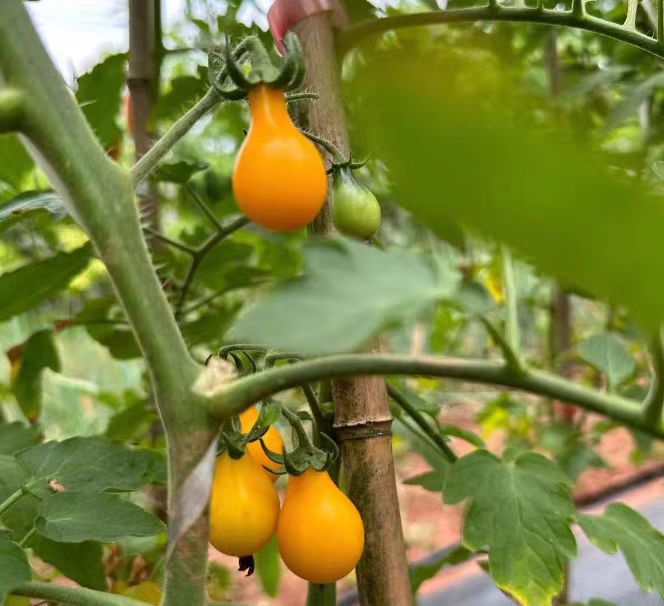Yellow pear tomatoes are an adorable tomato variety, with fruits resembling small pears in shape and golden in color. They taste sweet and sour, making them suitable both as ornamental plants and for harvesting delicious fruits. They are particularly ideal for balcony pot planting. Many friends want to know how to grow them well and when is the right time to plant.
This type of tomato prefers warmth and fears cold; it cannot grow well in too cold weather. Generally, for sowing and seedling raising, it is necessary to wait until the temperature is relatively warm. For outdoor planting in open fields, in warm southern regions, planting can begin after the weather stabilizes in spring—usually starting seedling raising in February or March, followed by transplanting after some time, so that flowering and fruiting can occur in April or May.
In colder northern regions, planting should wait until the weather warms up further: seedling raising in March or April, transplanting in April or May, and entering the fruiting period in May or June. For open-field planting, it is crucial to remember to plant only when the temperature stabilizes and there is no risk of low-temperature freezing damage, as otherwise the young seedlings are prone to frost injury. For balcony pot planting, the timing is more flexible, suitable for both spring and autumn. In spring, sowing can be done from early spring to April, and in autumn, sowing can be done in August or September when the weather cools down. If the balcony can maintain a warm temperature in winter (similar to spring), planting can also be attempted, but ensure sufficient sunlight and take heat preservation measures.
First, select seeds suitable for pot planting: choose varieties that are short, highly branched, fruitful, and disease-resistant. Purchase seeds from regular seed stores or reliable online shops to ensure good quality. The flower pot does not need to be too large—moderate size is sufficient—and the bottom must have drainage holes to prevent waterlogging and root rot from excessive watering. In terms of material, plastic pots or ceramic pots can be used, depending on personal preference.
Yellow pear tomatoes prefer fertile, breathable, and well-draining soil. At home, you can prepare the soil by mixing common garden soil with leaf mold, decomposed organic fertilizer, and river sand to make it loose and fertile. If you prefer convenience, you can directly purchase nutrient soil specifically for potted vegetables. Remember to add some base fertilizer when preparing the soil to enhance its fertility.
Before sowing, "bathe" the seeds for disinfection: soak the seeds in warm water for a while to kill surface pathogens, then change to warm water and soak for another period to allow the seeds to absorb sufficient water. After that, wrap them in a damp cloth and place them in a warm place for germination. Rinse them daily with warm water to keep them moist, and sow when small white sprouts emerge. Spread the germinated seeds in a seedling tray, cover with a thin layer of soil, water thoroughly, and place in a warm, sunny spot—germination will occur quickly. When the seedlings grow several true leaves, remove weak and diseased seedlings, leaving strong ones. At this point, apply a thin layer of organic fertilizer to help the seedlings grow stronger. When the seedlings grow larger, they can be transplanted into flower pots.
Choose a sunny day for transplanting. Carefully remove the seedlings from the seedling tray to avoid damaging the roots. First, place some decomposed organic fertilizer at the bottom of the flower pot as base fertilizer, fill with a layer of soil, place the seedling in the pot, spread out the roots, fill with soil and press firmly, water thoroughly, and place in a shaded, ventilated area for several days to allow the seedlings to adapt. After the seedlings adapt to the new environment, move them to a sunny location.
Yellow pear tomatoes particularly love sunlight; ensure they receive sufficient sunlight every day to grow robustly and bear more fruit. This tomato variety has strong branching ability, so timely prune off excess side branches, leaving only the main stem to improve air circulation and light penetration and reduce pests and diseases. With careful care and mastery of these key points, you can grow tomato plants (covered with) golden "small pears" on your balcony and enjoy the fun of planting and harvesting!
How to Plant Yellow Pear Tomatoes in Pots?

Share with
Tagged in :




Leave a Reply